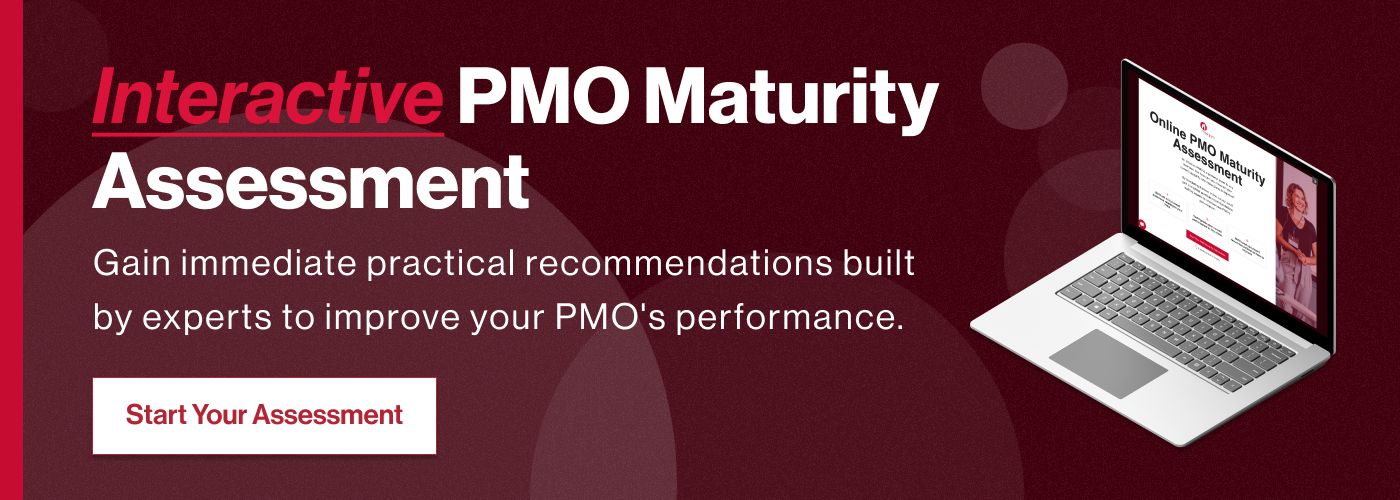Navigating the World of PMOaaS: A Comprehensive Guide
Six Key Principles for Optimising PMOaaS Service Centres
MetaPM Team
In recent decades, the business landscape has undergone significant transformation.
Technological innovations are reshaping traditional practices and paving the way for new competition, challenges, and opportunities.
Businesses are grappling with the need to remain competitive and address the ever-increasing complexities of project management, reducing operational costs, and elevating performance.
In response, companies are exploring new ways to refocus their core strengths while entrusting their Project Management Office (PMO) to specialised partners.
This strategic shift is not just about cost-cutting. It's about driving economic and performance gains that no major industrial player can afford to ignore.
In this comprehensive guide, we show how the principles of Project Management Office as a Service (PMOaaS) can support your businesses and transform your team’s potential.
What is Project Management Office as a Service (PMOaaS)?

Let's begin by clarifying some fundamental terms, ensuring a comprehensive understanding of Project Management Office as a Service (PMOaaS).
- Project Management Office (PMO): A PMO is a centralised function or department within an organisation that defines and maintains standards for project management. It provides oversight, support, and tools to project managers, facilitating efficient project execution.
- Project Management as a Service (PMaaS): PMaaS is an emerging service delivery model where specialised service providers offer project management resources, expertise, and tools to organisations. It allows businesses to access project management on a subscription or pay-as-you-go basis, providing flexibility in managing project demands.
- Project Management Office as a Service (PMOaaS): PMOaaS is an extended version of PMaaS. It involves a more comprehensive, longer-term contractual agreement where the pricing structure is based on specific PMO services, the complexity of projects, and the volume of work. PMOaaS providers take on the responsibility of managing an organisation's PMO functions, offering support, expertise, and tools for improved project outcomes.
Distinguishing PMOaaS from PMaaS
Understanding the differences between Project Management Office as a Service (PMOaaS) and Project Management as a Service (PMaaS) is crucial to optimising your project management.
- Scope and Duration:
- PMOaaS: Comprehensive, long-term PMO management.
- PMaaS: Project-specific, often short-term support.
- Pricing Structure:
- PMOaaS: Customised pricing based on services and complexity.
- PMaaS: Pay-as-you-go or subscription pricing.
- Strategic Involvement:
- PMOaaS: Deep strategic alignment with business goals.
- PMaaS: Focused on project-level execution.
- Service Integration:
- PMOaaS: Deeply integrated to standardise practices.
- PMaaS: Easily integrated into ongoing projects.
These distinctions help tailor this choice to your organisation's needs and objectives.
4 Steps to Establishing PMOaaS in Your Organisation

Transitioning to a PMOaaS model isn't just a change; it's a strategic shift that can yield substantial benefits for your organisation.
Like any significant transformation, it requires a well-defined plan and a structured approach to ensure long-term success.
The following four steps are based on real-world experience and proven methodologies that can guide you towards transformative PMOaaS implementation.
Step One: Identify
The initial step involves a thorough assessment of your current organisational landscape.
To embark on this journey, you must have a crystal-clear understanding of your organisation's vision, goals, and key performance indicators (KPIs).
Crucially, a successful managed service hinges on the ability to pay for outcomes, not just resources. Therefore, it's essential to pinpoint the core service requirements and establish suitable success metrics.
As part of this initial phase, organisations often undertake a Program Diagnostic. This comprehensive evaluation helps determine the availability of standard processes, tools, reporting mechanisms, and the degree of variation in task and project delivery.
Setting this baseline performance level is pivotal for future measurements and achieving early success.
In some cases, organisations may benefit from "light-touch" consulting to stabilise ongoing programs or projects and proactively prevent the need for significant future changes.
Step Two: Define
The second phase of the journey involves close collaboration between consultants and existing resources, which can encompass in-house personnel and external contractors.
The primary objective here is to outline a comprehensive catalogue of activities while crafting a mobilisation plan.
Creating this catalogue of activities, complete with a routine schedule for PMO functions and tasks, enables organisations to accurately gauge the effort required for effective project management.
Additionally, instituting a practice for estimating project complexity right from the start helps standardise service delivery across various project types, facilitating the establishment of consistent pricing.
Central to this phase is mobilisation, which means transforming existing resources and proactively managing any potential disruptions to ongoing projects.
Step Three: Deploy
The deployment phase marks the moment when the managed service is implemented and embraced.
It's a period of standardisation in both service delivery and pricing, with project managers taking charge and ensuring they meet the client's needs and expectations effectively.
As the organisation scales up, projects are seamlessly integrated into the portfolio or Book of Work through a carefully managed change control process.
Regular reviews are conducted to guarantee client satisfaction, particularly as more projects are added to the portfolio.
Key performance indicators are used to gauge success, including resource fulfilment times, customer satisfaction levels, onboarding progress, and service delivery status.
Embedded Delivery Managers stationed within the teams play a pivotal role in streamlining operations. They’re an invaluable asset when managing numerous contractors or suppliers.
Step Four: Operate
The fourth phase is all about continually enhancing the PMO service.
Successful PMOs are in a constant state of self-improvement, always seeking new ways to add value to their organisation. During this phase, several critical questions should be addressed:
- Is there a need to shift focus toward business intelligence, digital initiatives, or AI?
- Should the PMO expand its scope to encompass change management services?
- Is it the right time for the client to take control of the service?
This phase highlights the modern PMO's ability to adapt to changing needs and its unwavering commitment to excellence.
Whether your primary goals involve reducing management efforts, boosting project management capabilities, or enhancing delivery quality, these steps serve as your strategic roadmap to success.
Why a Well-Planned PMOaaS Transition Is So Important

Moving to a managed service model represents a substantial organisational change requiring careful planning. Treating this transition as a substantial program change is crucial.
This approach involves identifying effective change management strategies and mitigating risks associated with the transition.
A well-executed transition paves the way for a seamless shift to PMOaaS. It enables the organisation to fully reap the benefits, such as reduced management efforts, enhanced project management capabilities, and improved delivery quality.
How To Leverage PMOaaS for Enhanced Organisational Efficiency
PMOaaS offers more than cost savings; it's a gateway to enhanced efficiency and operational excellence.
By reducing management overhead, organisations can shift their focus to core competencies while entrusting PMO functions to experts. This reallocation of resources leads to:
- Improved Project Management Capabilities: With experts handling PMO functions, organisations can expect better project management capabilities, resulting in more successful projects.
- Higher-Quality Project Deliveries: Focusing on core strengths allows for better-quality project deliveries.
- Continuous Improvement and Adaptability: Agile PMOs readily embrace the opportunity to respond to shifting business landscapes with this dynamic and flexible approach.
Transitioning to PMOaaS offers organisations these and more benefits, making it a profound strategic move for long-term success.
Your PMOaaS Journey Towards Excellence Begins With MetaPM
The journey to PMOaaS is a structured path. With the right approach and support, organisations can unlock new levels of success in project management.
It’s not just a cost-saving measure. It's a strategic shift toward efficiency and excellence.
MetaPM excels in guiding businesses through this transformation. We understand the significance of a well-planned transition to PMOaaS and the long-term benefits it offers.
Our consulting, resourcing, and Agile delivery solutions are custom-designed to empower organisations in their PMOaaS journey. We’re ready and waiting to optimise your PMO functions, reduce management effort, and enhance delivery quality.
When you're ready to enter the world of PMOaaS and achieve market-leading excellence in project management, contact MetaPM today.
Weekly Newsletter
Subscribe to our newsletter today to keep up to date on what’s happening.


